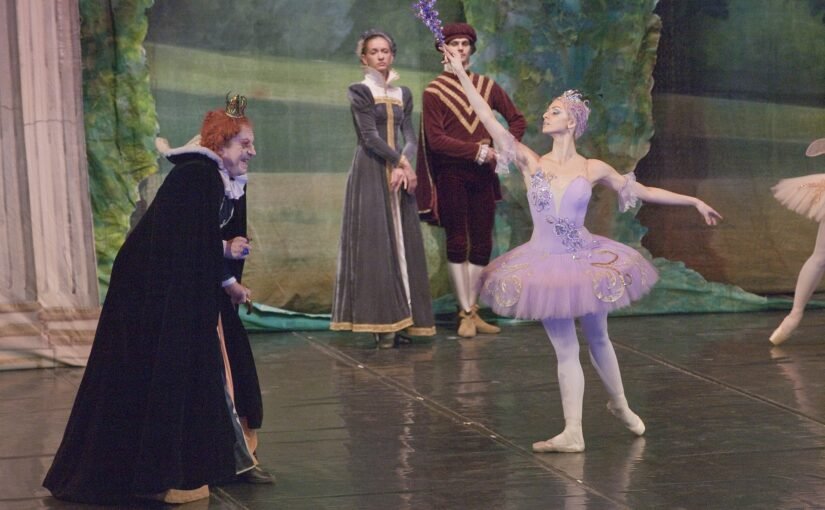Plié is a French term universally adopted in the ballet world that means “bent”. In the beginning, the dancers start to practice the demi-plié (demi means medium). And once this is mastered, they go on to practice the grand-plié (grand means big). In this article, you’ll learn how to do a plie perfectly.

Table of Contents
What is the purpose of a plié?
The plie is a very important movement in dance. It is a basic exercise that develops tendons, thigh muscles, calves, ankles and feet, increasing the flexibility and strength of the Achilles tendon. To sum up, plies improve the equilibrium and render the joints and muscles soft and flexible.
Having a good plié is essential to perform jumps. They always start and end with a plie. The plie at the beginning of each jump serves as a “spring” that facilitates the elevation of the body. And when falling in plié, the contact with the ground is cushioned. If you can’t do plié correctly, your dance will be rigid and inelastic. And what is more, you are at greater risk of injury, especially when you are doing a jump.

What makes a good demi plié?
The demi plié is done by bending both knees to the sides (outward), without taking the heels off the ground and keeping the body straight; when you have gone down to where you can no more (without taking off your heels) you stretch your knees again. Movement always has to be fluid and gradual. Start by practising plie in the first and second position, and then move on to the fourth and fifth.
You must open your knees well and press your butt muscles, always maintaining your hip turnout (from hip to knee). The weight of the body is distributed between the legs, too. It’s also necessary that you keep your heels on the ground to develop your tendons and instep joints. Also, remember to bend your knees over your toes.
The arms can go in the first position. But if you are an advanced student, you can do a port de bras. Once you have mastered the demi-plie, you can start practising the grand plié.
How to perform a perfect grand plié?
Grand plies can also be done in any one of the five ballet positions. The grand plie is the consequence of a demi-plie. So, to do it correctly, you have to go through the demi plie process and when you can’t stretch your tendons anymore, start to lift your heels off the floor.
The grand-plié is done by bending the knees to the sides (outward), first without taking the heels off the ground (going through the demi -plié process), when you cannot keep your heels on the ground anymore because you keep bending your knees, they rise slightly consequently. You should bend your knees until your thighs are horizontal. To return, you have to push the heels down pressing them against the ground and once there, straighten your legs.
But as for every rule, there is an exception, in the second position you should keep your heels firmly planted on the ground. Remember also that in the second position, you have to separate your feet by the distance of one foot.
The Grand-Plié in the First Position
Keep the heels as long as possible on the ground. The knees should be at least half-bent before the heels are permitted to rise. And when the heels rise from the ground, they must not be raised higher than the demi-pointe. The knees are maintained in the same horizontal line.
Some mistakes common to pupils are:
- Rising immediately the heels before bending the knees
- Straightening the knees quicker than they are bent. Remember that the body rises at the same speed at which it descends.
- Keeping the feet on demi-pointe while straightening the knees and then lowering the heels to the ground.
What should you think about when doing it?
- It is crucial that you contract your glutes to develop your hip turnout. Also, you should relax your shoulders.
- Pay attention to the movements and position of your insteps. Don’t let them relax either in strength or elasticity. The main use of the insteps is the raising and lowering of the heels. Strive to make the instep strong because this depends on the equilibrium of the whole body.
- When doing a plie, bend and straighten your knees in a manner perfectly gradual, regular and free from jolts.
- Take care to move your arms soft, rounded, easy and without stiffness.
- On the second and fourth positions, the weight of your body must fall exactly in the centre of the space occupied by the two feet.
- Once the climax of the plié is reached, start stretching your legs right away at once.
- The descent to the climax of this movement takes as long as the ascent and you should do it gradually.
KEY INFO
In classical dance, the weight of the body is never dropped on the feet. You should always try to stretch, pushing your psoas muscle forward and up. Besides, don’t forget to press your feet and heels against the floor. That will cause your torso to rise, giving the sensation of being out of gravity.





Leave a Reply